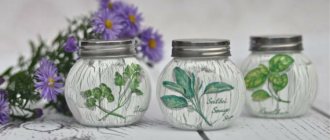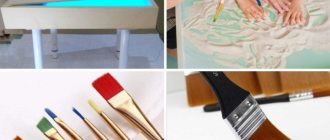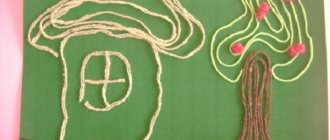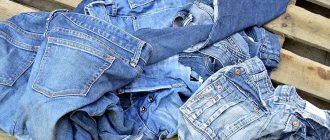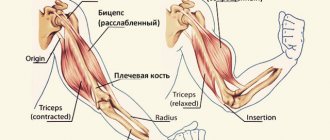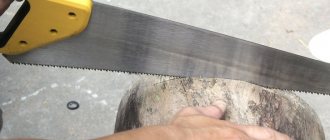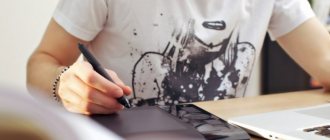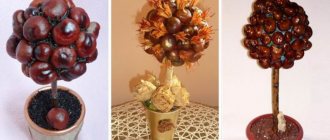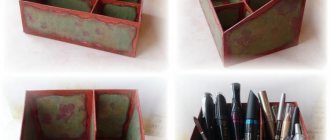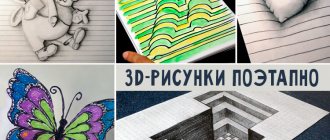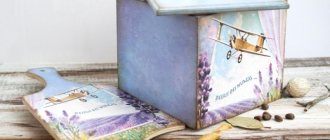Ebru is a very interesting drawing technique. In our article we will tell you what it is and how to use it correctly.
Ebru is a special painting technique that uses water instead of regular paper. Of course, regular water will not work for this; the water must first be prepared in a special way. As for paints, they are also not entirely simple and must have a special natural base. As a result, the drawings turn out to be extremely interesting and beautiful, and it is almost impossible to repeat them.
Drawing on water will be interesting for everyone, regardless of age. This original method allows you to keep your little one busy for several hours. In addition, with the help of this technique you can develop imagination and creative skills, and this is very important for every child. In our article you will learn what this technique is and how to implement it using simple steps.
The technique of drawing Ebru on water - the history of its origin
Drawing Ebru
Despite the fact that Ebru is recognized as a Turkish technique, it originated in eastern countries. It begins in Japan in the 12th century. At that time, the art of suminagashi, which translated means “floating ink,” was actively developing there. In this way, the monks drew unique patterns on thin rice paper or fabric, which they then used for decoration. This became very popular especially among emperors and their inner circle.
At the moment, there are many versions of where exactly the technique of creating drawings on water came from. The sources mention different countries and despite the fact that the technique itself began its life in the 7th century, its name began to be used only in the 10th century.
Turkish masters were great artists and created not only abstractions and flowers, but also more complex compositions. The word itself is translated as “air clouds.” And it’s true, if you look at the finished paintings, it immediately becomes clear why this particular name was used.
Paper
To preserve the creative result, the painting is transferred to paper. You will need a fabric that is not too dense; according to the requirements, it must differ in the following parameters:
- The size must be suitable for the selected container;
- Absorb the coloring composition efficiently;
- It must withstand exposure to water so that it does not immediately become wet when exposed to it;
- Be in good shape and quickly restore it after drying;
- A suitable weight level is approximately 120gsm, which is thicker than printer paper.
Paper material is also sold specifically for this painting technique.
The fabric must be able to withstand exposure to water so that it does not immediately become wet when exposed to it.
What is Ebru: technical features, review, characteristics
What is Ebru?
Drawing Ebru involves using liquid instead of the usual paper. This is not ordinary tap water, and watercolor paints will not work. Hevea extract is added to the liquid. It allows you to thicken it so that the drops do not mix with each other and do not settle at the bottom.
As for paints, they are created on the basis of ox bile and special minerals. There are no clear boundaries for drawing, the patterns are arbitrary and do not need an outlined border.
Liquid paint is perfectly distributed on the surface, and special tools allow you to create beautiful patterns. After completing the drawing, the image can be printed on paper. Professionals can use surfaces made of other materials for these purposes.
Combs
After spraying the dye, you need to give it direction; combs with metal spikes are suitable for this. They are made infrequently on the basis; it is with the spikes that the paint is drawn into the desired image using water.
After spraying the dye, you need to give it direction; combs with metal spikes are suitable for this.
What you need to paint on Ebru water: tools
Tools for Ebru
Drawing Ebru, in fact, is not a very complicated technique that every beginner can master on their own. This is one of the best activities for a child as it allows him to develop. The process of drawing can captivate even an adult. To learn how to create beautiful drawings you will need:
Thickener
As we have already said, the painting liquid needs to be dense and dense so that the paint does not sink to the bottom and dissolve. For this purpose, special thickeners are used. They come in powdered or liquid form for preparation, or ready-made. The packaging of each of them contains instructions for use, which must be strictly followed.
Sometimes the surface may become covered with air bubbles. They need to be removed and regular newspaper is used for this. Place it on top for a few minutes and then carefully remove the newspaper from the edge.
Cover the solution in this manner each time after using the solution. To avoid having to drain the thickener, place a piece of paper or newspaper on top. This will prevent the liquid from evaporating.
By the way, if you don’t have a goal to always do this kind of drawing, but decided to just try it, then you can use starch or flour instead of purchasing a thickener. It is impossible to name a specific quantity, but the mass should turn out like a paste.
Paints
Paints for Ebru
Paint for this technique contains natural pigment, water and bile. It is quite liquid, one might say that it is colored water, and therefore it spreads well over the surface. You can purchase it in a special store where both Turkish and Russian brands are presented. Moreover, there are also special concentrates for dilution.
Before you start creating a drawing, it is better to pour the paint into different containers, or you can use disposable cups for this. Before use, shake the bottle to mix the pigment and pour a little into the container. You should not pour the paint directly into the solution, because then it will sink into the thickener. It is better to use an awl or a brush.
It’s just that you don’t have to buy paints to experiment; you can make them yourself. To do this, you will need a simple oil paint, as well as a solvent. Place all colors in separate containers so that they do not mix. By the way, you can even use gouache, but then instead of water there should be milk.
Dishes
For water, you can use any deep container. If you purchase a ready-made set, it usually includes a tray in landscape sheet format. It can also be purchased separately. The larger the container, respectively, the larger the pattern, especially since liquid will be used as a canvas.
Brushes
Brushes for Ebru
Any brush will not work for Ebru. It must be made from horse hair. This can be a simple brush or a brush-brush. Each color uses its own brush so that the colors do not mix. According to the technique, there is no need to touch the surface directly with the brush, otherwise the paint will sink. Paint splashes from it and abstractions are created. When the drops touch the water, they spread and create interesting patterns.
Combs
Combs are a special tool that is designed to create patterns. Externally, these are small rakes or combs. It looks like a row of needles attached to a flat base. They allow you to set the background and symmetry of the ornament.
Awl
An awl can also be used for drawing. It allows you to draw finer details and with its help you can create beautiful drawings, for example, flowers, butterflies or birds. You can replace it with knitting needles. When you draw a particular detail, then wipe the end of the tool afterwards so as not to mix the paint.
Paper
Drawings on paper
It is required to fix the picture. You can buy Ebru ground paper. Although, you can use a simple one. To prevent the image from blurring, do not use paper that is too thick when you are a beginner.
EBRU
Ebru is the ancient art of drawing on water and then transferring the resulting image onto fabric. It is believed that this type of drawing from India spread first to Persia, and then to Turkey, where it received this name. Water painting techniques were widely used in other countries.
For example, in Japan this type of arts and crafts is called suminagashi. Ebru is sometimes also called water painting or water animation.
The idea of drawing on water is also used in a simplified form at marbling workshops at Kinder Art family creative centers, where in 45 minutes you can get acquainted with the idea of transferring patterns created on water to a dense surface.
How does this happen
For drawing using the ebru technique, special materials and tools are used. To paint in the Ebru style, you need not ordinary water, but a solution with increased density, in which the paints spread over the surface in spots.
And here the skill of managing color spots is required, turning them into drawings and paintings. The tools used in ebru are simple in essence, but at the same time universal: an awl, a brush, a comb allow you to masterfully create all kinds of pictures and patterns characteristic of this technique.
Masters of this technique are able to create true masterpieces of fine art. Professionalism in this field is achieved, of course, through training and many years of practice under the guidance of an experienced master.
The created pattern is transferred to paper or fabric by touching it to the image on the surface of the water.
What we teach
When an observer sees how easily and gracefully the Ebru masters create magnificent examples of fine art from spots of color - magical birds, amazing flowers or bizarre abstractions, it seems that nothing is simpler.
However, behind the apparent simplicity lies the talent of the draftsman and the technique of working with such specific materials and tools, developed over the years. In our classes we teach: - working with solutions and paints.
It is very important to know the proportions of a special solution that increases the density of water and prevents paints from sinking.
Also, different paints do not always behave the same, so we can experiment with proportions, colors and achieve the desired result; — techniques and techniques for drawing on water; As you know, you can “get” your hand only through long training.
During the classes you learn to clearly imagine what you have planned, and then translate the plan into reality. If this process takes place in a circle of like-minded people and under the guidance of an experienced teacher, then the nuances and subtleties are learned in practice; — methods of transferring the resulting pattern to different surfaces; At the beginning of the course we work with various types of paper, more experienced students work with fabric (silk). Lesson program.
ADVANTAGES/BENEFITS
Any type of creativity fills a person with positive energy. The Ebru technique leads to contemplation and concentration at the same time.
Ebru differs from drawing on hard surfaces - paper, canvas, wood or ceramics - by a certain ephemerality and instability, and therefore requires a clear statement of the task.
Contemplation promotes relaxation through creativity and filling with positive emotions; concentration is concentration and implementation of intention. In children, ebru develops and strengthens motor skills, and also teaches concentration and achieving results without emotional stress.
Adults are interested in technology due to its wide capabilities and amazing results. And, of course, during the classes, all participants become acquainted with and acquire drawing skills, which constitute their own “capital”, which will allow them to develop in various creative directions.
Source: https://kinder-art.ru/ebru.html
How to draw on water using the Ebru technique: instructions
Now that you know about all the necessary equipment, you can start drawing directly. First, prepare the solution according to the instructions, let it brew and pour it into the pan. Divide the paints into cups and prepare all the necessary tools.
Stage 1. Create the background
Before you start creating the pattern itself, prepare the background color. It will hold all the paints that will be applied on top. Take paint into a brush and splatter it over the top. Don't be afraid that the first drops will dissolve. This is a normal reaction. After this, you don’t have to worry about the paint fading. She will remain at the very top.
You can make the background in one tone or use several colors. The paint does not mix and the patterns are unique. Try using a comb to create complex compositions. By the way, it is better not to use more than 2-3 colors for the background. If there is a lot of paint, the layer will be greasy and it will be difficult to transfer the drawing to paper.
Stage 2. Create the main drawing
Drawing Ebru
The meaning of drawing Ebru is to create a circle on the water, and then create patterns from it. It is better to draw simple drawings at first, and only then try complex ones. The more small details there are in an image, the more skills will be required to create it. Start trying with butterflies or flowers. For example, the scheme for creating a simple flower is as follows:
- We put a little paint on an awl and lower it into the water. There is no need to touch the surface itself with an awl
- You will get a small circle. If you want it to be bigger, add more paint in the same way.
- After this we make another circle from the center, but of a different color
- Place the tip of the awl near the edge of the circle inside and begin to remove the petals from it
- Remember that the paint from the awl must be washed off each time, otherwise the paint will shift
- To get a clear drawing, do this every time.
Using different tools, you can create a variety of drawings; it all depends on your imagination.
Stage 3. Transferring the drawing to paper
When the image is ready, you can print it on paper. To do this, carefully place the sheet on the surface and leave for 10-15 seconds. To ensure that the drawing is printed well, draw it carefully across the paper.
After this, you can carefully remove the sheet through the side of the container so that excess water remains in it. Wait for the image to dry and place it in a frame.
Water container
From the dishes you will need to prepare one for applying patterns. It should be the right size for the task at hand, and there should be sides to hold the liquid. You shouldn’t use tall ones; it’s easier to draw when they’re low.
It is also worth preparing a small container for paint, one for each shade.
It should be the right size for the task at hand, and there should be sides to hold the liquid.
How to make ebru paints with your own hands
It is possible to make paints for Ebru yourself, but you will also need a homemade base. This is how acrylic paints are used, which are made liquid, ordinary water is added to them, and glycerin or starch is used to thicken the water film.
For children's work, you can use gouache, also diluted with water. The base will be full-fat milk, with a couple of drops of dishwashing liquid added.
Acrylic paints or gouache are suitable, they are made liquid and ordinary water is added to them.
